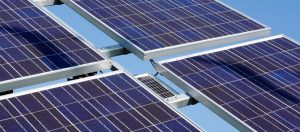The state government-sponsored bids for tenders of solar power projects in Odisha is likely to see stiff competition, as top-notch private developers and leading public sector undertakings (PSUs) compete in the bidding process.

The state government is set to begin the process of awarding tenders within a fortnight. These are for projects that are expected to generate 200 megawatts (Mw) of solar power.
The auction would be conducted according to the latest guidelines on solar power auctions issued by the Ministry of New & Renewable Energy (MNRE), said the state government.
According to Business Standard, Hemant Sharma, secretary (energy), Odisha and chairman cum managing director at Gridco Ltd, the state-owned power trading firm said, “Reverse bidding mechanism would be followed to select the developer. Odisha could secure a levelised tariff of Rs 3.50 per unit. This tariff would still be competitive given Odisha’s limitations in the quantum of solar radiation received and also the challenge in land acquisition,”.
Major players in solar power space like ACME Solar, SB Energy (a joint venture of SoftBank, Foxconn Technologies and Bharti Enterprises), Tata Power, Essel Green Energy and Adani Power have shown interest to participate in the bids.
Private players and leading PSUs such as the National Aluminium Company Ltd (Nalco), NLC Ltd (formerly Neyveli Lignite Ltd) and North Eastern Electric Power Company Ltd (NEEPCO) are also keen to participate.
The state government roped in the Gujarat Energy Research & Management Institute (GERMI) as a consultant to help in preparing the bid documents.
Gridco Ltd would be the off-taker of entire solar power generated.
The reverse auction is expected to help in getting the best prices for the state and attract major players. The projects will be developed on the non-solar park model where the developer has the option to choose the location.
But, observers feel Odisha needs to catch up with peer states to make its solar power bids more attractive for investors.
“If anyone is bidding below 100 Mw, the rate of Rs 3.50 is not feasible without any government support in the form of VGF (Viability Gap Funding). If a single developer is bidding for minimum capacity 200 Mw, the rate is feasible provided that there is no anti-dumping duty (on solar panels). In current capacity, other states are faring better by providing incentives and bearing the cost of transmission,” said Chandrashekhar Mishra, managing director, Canyon Consultancy Pvt Ltd- a city-based project management consultant for solar. Under a scheme of MNRE, the solar tariff rate in Odisha stood at Rs 4.5 per Mw.
Essel Green Energy, which is a part of the Subash Chandra-owned Essel Group, has won a bulk of the tenders for 270 Mw solar capacity floated by the Solar Energy Corporation of India (SECI) in Odisha. Essel Green Energy was awarded 240 Mw; Jyoti Infrastructure bagged 10 Mw; and IBC Solar Ventures got the remaining 20 Mw of solar capacity.
Odisha receives an average solar radiation of 5.5 kWh/square meter area with an average capacity utilisation factor (CUF) ranging from 15-17 per cent across districts. The state, at present, receives around 300 clear sunny days every year.
States like Rajasthan, Madhya Pradesh, Maharashtra and Andhra Pradesh receive more sunlight than Odisha.





























